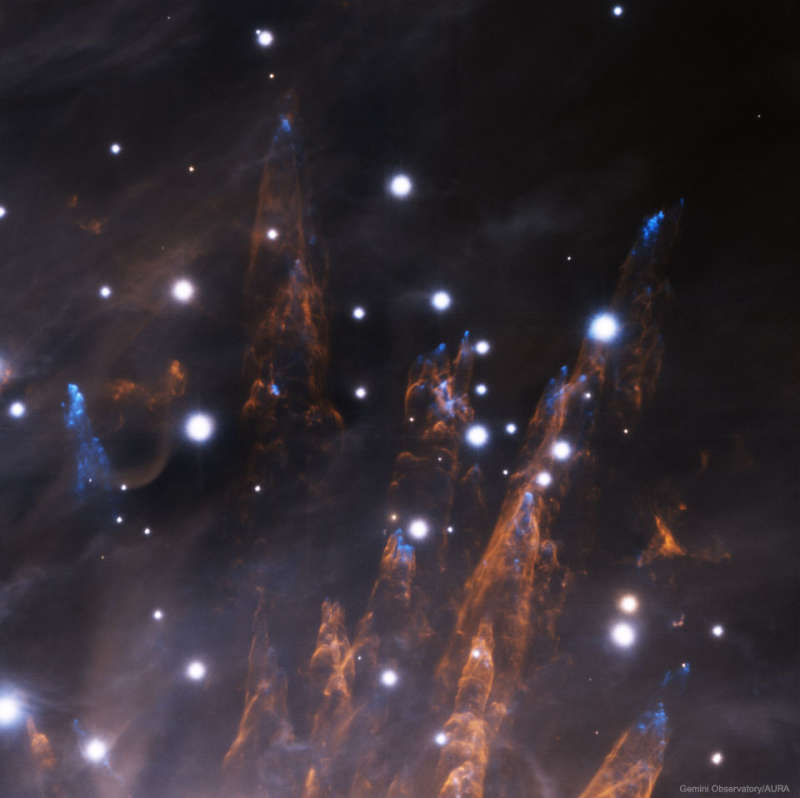
|
Credit & Copyright: GeMS/GSAOI Team,
Gemini Observatory, AURA,
NSF;
Processing: Rodrigo Carrasco (Gemini Obs.), Travis Rector (Univ. Alaska Anchorage)
Explanation:
Why are bullets of gas shooting out of the Orion Nebula?
Nobody is yet sure.
First discovered in 1983, each bullet is actually about the size of
our Solar System, and
moving at about 400 km/sec from a central source dubbed IRc2.
The age of the bullets, which can be found from their speed and distance from
IRc2,
is very young -- typically less than 1,000 years.
As the
bullets expand out the top of the
Kleinmann-Low section of the
Orion Nebula,
a small percentage of iron gas causes the
tip of each bullet to glow blue, while
each bullet leaves a tubular pillar
that glows by the light of heated hydrogen gas.
The detailed image
was created using the 8.1 meter
Gemini South telescope in
Chile with an
adaptive optics system (GeMS).
GeMS uses
five laser generated guide stars
to help compensate for the
blurring effects of planet
Earth's atmosphere.
Processing: Rodrigo Carrasco (Gemini Obs.), Travis Rector (Univ. Alaska Anchorage)
|
January February March April May June July August September October November December |
| ||||||||||||||||||||||||||||||||||||||||||||||||
NASA Web Site Statements, Warnings, and Disclaimers
NASA Official: Jay Norris. Specific rights apply.
A service of: LHEA at NASA / GSFC
& Michigan Tech. U.
Based on Astronomy Picture
Of the Day
Publications with keywords: Orion Nebula
Publications with words: Orion Nebula
See also:
- Orion and the Running Man
- APOD: 2025 August 13 Á Trapezium: In the Heart of Orion
- APOD: 2025 April 20 Á The Orion Nebula in Visible and Infrared
- APOD: 2024 November 4 Á M42: The Great Nebula in Orion
- APOD: 2024 September 10 Á Horsehead and Orion Nebulas
- Trapezium: At the Heart of Orion
- APOD: 2023 October 10 Á Hidden Orion from Webb
